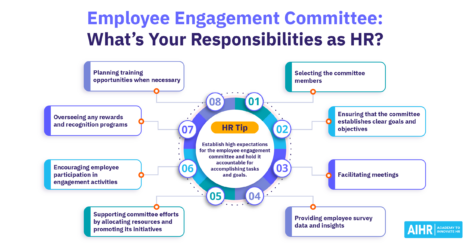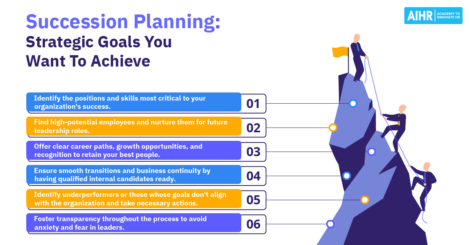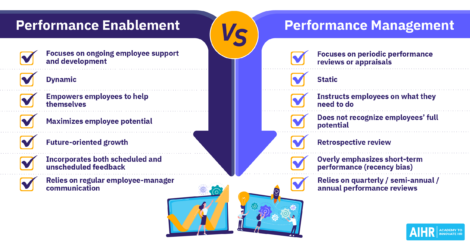Behaviorally Anchored Rating Scale: A Full Guide with Examples
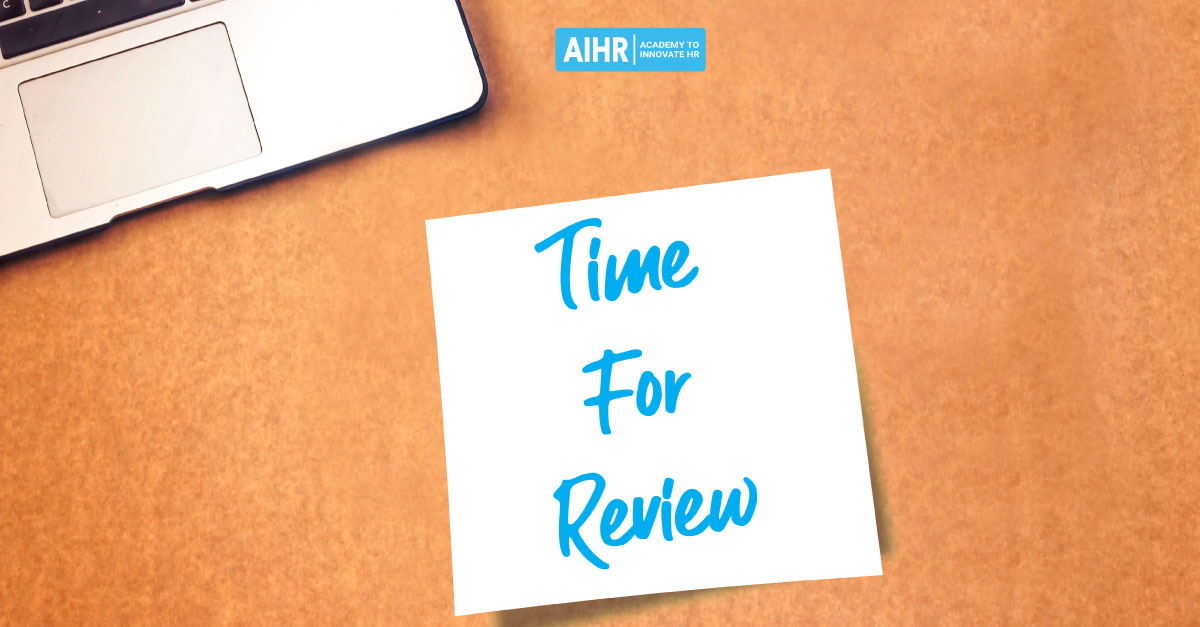
Behaviorally anchored rating scale (BARS) in performance management is nearly a 60-year-old concept. One reason it has persisted this long—that organizations still pour time and resources into building and maintaining these scales—is that it is defensible. It’s hard to challenge judgments based on direct observation of behavior. So how can behaviorally anchored rating scale fit into your talent management practices today and in the future, and how do you develop one?
Contents
Behaviorally Anchored Rating Scale: A Definition
Pros and cons of using a Behaviorally Anchored Rating Scale
How to develop a behaviorally anchored rating scale
Behaviorally Anchored Rating Scale: A Definition
A BARS is a tool for evaluating employees in a defined set of performance dimensions by comparing their behaviors with specific behavior examples that anchor each performance level, usually on a five-, seven- or nine-point scale.
You can define those behaviors using the critical incident technique (CIT) or other job analysis methods. Subject matter experts identify a range of outcomes, then describe specific incidents and the behaviors that create those outcomes.

A similar tool is the behavioral observation scale (BOS) used to measure specific expected behavior frequency.
Examples of BARS
A teamwork dimension will serve many roles. On a five-point scale:
- Level 1 criterion could be “Makes inappropriate or rude comments.”
- Level 5 criterion could be “Encourages and facilitates moderation of conflict.”
For a software engineer, in the dimension of applying knowledge of Python:
- Level 2 criterion could be “Has a working knowledge of Python and can complete projects with supervision.”
- Level 4 criterion could be “Completes projects in Python and related technologies without supervision.”
Uses of BARS throughout employee lifecycle
Most organizations use behavioral anchors because they serve as a comprehensive system that aligns each role with business priorities. They guide the entire employee life cycle by providing a complete profile for every individual. You can use a Behaviorally Anchored Rating Scale in the following HR activities:
- Talent Acquisition: When your recruiters know what behaviors you need, they can do a better job sourcing candidates. Hiring managers then use the BARS to conduct and evaluate structured interviews.
- Learning and Development: Coaching and development are easier for managers when they have specific behaviors to target. Most enterprise-class learning management systems use them to help create individualized learning paths.
- Performance Management: Behavioral anchors guide managers in performance feedback and evaluation.
- Career Pathing: A career path is essential to attract and keep top performers. Behavioral anchors provide direction for mentoring and planning their growth.
- Succession Management: Identifying talent gaps is easier to do when you have specific performance dimensions to identify high potential employees (HI-POs) and select potential successors.
- Culture: Nurturing behaviors that drive your culture can have a significant impact on your organization. Anchors also provide behaviors for leaders to model.
Other rating scales for employee evaluation
The most commonly used scale is the five-level graphic rating scale. It is a value of 1 to 5, with a brief label for each level. In the past, typical labels were “satisfactory,” “average”, “excellent”, “superior”, and “unacceptable”. Many organizations have tried to make labels more encouraging, but they still result in subjective judgment and rater biases.
Companies often apply graphic rating scales to competency-based evaluations. However, these might provide generalized descriptions, encouraging subjectivity in ratings.
Other scales exist, ranging from three performance levels to 10 or more. About fifteen years ago, an engineering company insisted on a point rating scale from 0.01 to 10.00 with two decimals. Their justification was that their engineers enjoyed the “illusion of precision”.
Jack Welch, a former CEO of US company GE, created stacked ranking, also known as forced ranking or “rank and yank” in the 1980s. Welch used the ranking to group people as A, B, and C players. The A group was deemed promotable, and the C group was dismissed. Stacked ranking was popular but died out after employee backlash. Some companies used it for layoffs during the 2008 recession. Although it produced positive outcomes because it rewarded top performers, it almost always created destructive competition among employees.
Pros and cons of using a Behaviorally Anchored Rating Scale
Most industry-leading companies have moved toward continuous feedback. However, they still need annual reviews to create metrics for differentiating among employees for pay increases and internal promotions. They need a structure that can support strength-based coaching through the year and serve as a summary review at the end of the period. BARS can do both functions well and you can use it in combination with other feedback methods.
Advantages of BARS
- Validity: Jobholders and their supervisors who know the job develop the behavior descriptions. Their expertise creates construct validity, which means BARS measure what they are intended to measure. For example, if you evaluate whether a customer-facing employee treats visitors well, you can specify that the expected performance is greeting them with a smile. The evaluation matches the operational definition. Their content validity means they represent actual behaviors of good customer service.
- Easy to use: Because behaviors are well-defined, managers and their employees understand them without extensive explanations or training. As a result, managers don’t have to spend hours writing long narratives to justify ratings. Behaviors are present, or they are not.
- Clear standards: BARS create mutual understanding between managers and their employees on what they are reviewing and opportunities for improvement. That understanding facilitates a developmental discussion.
- Consistent: Because behavioral statements are simple and straightforward, there is little variance regardless of who is the assessed and the assessor.
- Individualized: There are commonalities among roles across the organization, but each position in the organization will have a unique set of role-related behaviors.
- Impartial: The focus is on behavior, not the value of the person being evaluated, which enables frank, open discussions.
Disadvantages of BARS
- Complex implementation: Although many roles will have similarities in soft skills, citizenship, and leadership behaviors, every role will have different behavioral indicators that require analysis. You must develop, review, and calibrate every performance level for each behavior. Behaviorally Anchored Rating Scale is easier to maintain in businesses like retail, insurance, or contact centers with many similar roles.
- Expensive: Developing a BARS requires job analysis and advanced skills to review behavioral statements written by subject matter experts. You may need an industrial psychologist or consulting company’s services. Experienced workers, supervisors, and HR staff must be away from their jobs to write down the behaviors.
- Time-consuming: Especially in businesses with similar roles, it can be a burden on managers to discuss the performance of 60 or more behaviors with each individual. In industries like contact centers, first-level managers often have a span of control of up to 30 workers.
- Frequent updates: In today’s workforce, where skills have a short half-life, you must update behaviors frequently. In some cases, roles can change with every job posting.
- Leniency bias: BARS removes or reduces many bias errors, but it doesn’t eliminate leniency error. The assessor must focus on each behavior in the review.
How to develop a behaviorally anchored rating scale
Even the best performance management system won’t be successful unless you prepare your organization for the change. We recommend you begin your project a year and a half to two years before the first evaluations are due. Here’s why:
- Most initiatives that fail do so because of a lack of commitment from top management. Another is a failure to manage the change. It would be best if you prepared the executive team to lead: the first communication should come from the CEO, and it should be completely transparent about the program’s purpose and goals. If you don’t get that engagement, the prevailing sentiment could be, “Oh, no. Here comes HR—again.”
- Employees need to know their performance criteria before the evaluation period begins.
- It could take several months to develop the performance dimensions and behaviors, depending on SMEs’ availability.
- Suppose you move from doing only periodic reviews to continuous, strength-based feedback. In that case, launch it using behavioral anchors to facilitate those frequent conversations and prepare the way for the annual summary review.
- You may need to upskill your managers in performance conversations.
Here’s what a typical process for building a Behaviorally Anchored Rating Scale could look like at your organization:
1. Build a governance team
If you make your project an HR effort instead of an organizational transformation, you miss a chance to align HR to the business and to lead a lasting change. Make your effort about aligning people to the organization’s purpose and profitability. People want to be on a winning team.
Reach out to leaders in your organization who understand your commitment to the success of the business. Look to the people who create value for your company.
If you don’t have one already, let your team become the steering committee for performance governance. If you have one, they are your team. You gain insight by looking at performance through the eyes of those who make value happen.
Include Marketing on your team. We’d like to think we’re excellent writers, but marketers are the experts in writing messages that engage their audience. Today, marketing is about relationships. The marketers who spend years learning how to connect with people about what matters to them can help you connect with your organization’s employees and improve your internal communication.
2. Assemble and prepare your teams of experts
Get commitments from subject matter experts to serve on your teams. Consider using teams of experts in each job group facilitated by HR classification experts. Your SMEs could be hiring managers for the roles you’re developing BARS for, or senior employees in those roles.
You will have two groups of SMEs, the first creating the behavior statements and a second group to retranslate the statements into performance categories and their definitions.
Have your HR expert, I/O Psychologist, or consulting partner prepare them for writing behavior statements. You may also want to coach them on consensus decision-making.
You can use an inductive approach to grouping performance dimensions using commonalities among critical incidents/behaviors or a deductive approach where you specify domains and your SMEs develop behavioral statements within them.
We will describe the inductive approach in the following steps.
3. Identify behaviors
Have your teams use Critical Incident Technique, Task Inventories, or Job Analysis or a combination of them to explore behaviors related to the job, both effective and ineffective behaviors. You can use our Job Analysis Guide and Template to work through the process.
Edit the statements into a standard format and remove redundancies. Then identify commonalities to prepare for creating performance dimensions.
4. Establish performance dimensions
Group behaviors to create performance dimensions. For instance, for a supply chain manager, they might include “Communications and Negotiations with Suppliers” and “Optimizing Warehouse Functions.”
5. Retranslate the behaviors
Your second group of SMEs will then align each critical incident or behavior to the performance dimensions it best fits.
6. Scale behaviors and incidents
Sort your behaviors into your rating scale based on SMEs’ evaluation of how effective they are.
You will probably find that you don’t have a statement for every performance level on your scale, so your team will need to fill in the blanks.
Scale Label Behavior 1 Behavior 2 Behavior 3 Behavior 4 5 Exemplifies Standards ✔️ 4 Exceeds Standards ✔️ 3 Meets Standards ✔️ 2 Needs Improvement ✔️ 1 Does Not Meet Standards
7. Retain relevant behaviors
Determine which behaviors are relevant by choosing those with low deviation related to the effectiveness of each behavior. If you do not have relevant performance data, you need to rely on SMEs’ judgment. Look for each statement’s construct validity relative to the performance scale.
8. Develop the final version
Edit the surviving statements for grammar, syntax, and clarity, taking care to preserve their meaning.
For a nurse, the original statement in one of the performance dimensions might have looked like this:
“Shows higher levels of empathy in all dealings with patients and their families.”
You would want to show what “higher level” means:
“Conveys higher levels of empathy with patients and their families by mirroring their posture and tone of voice.”
For a customer services representative, it could be:
“Answers the phone promptly and courteously.”
You can make this more specific:
“Answers the phone courteously on the first ring.”
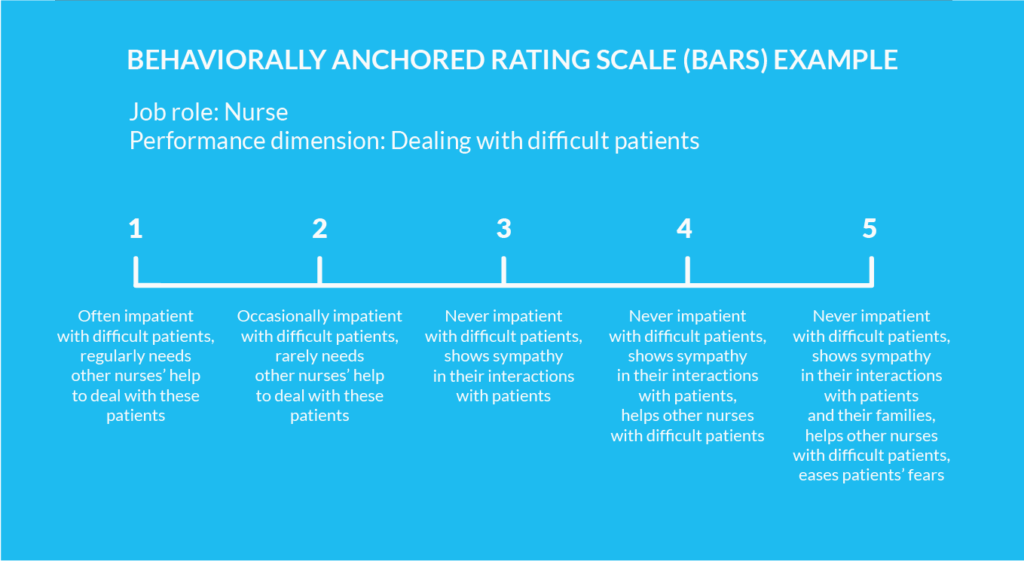
Conclusion
Behaviorally anchored rating scales will serve you well if you have the resources to support them.
It can improve performance, engagement, and employee retention. They can strengthen your culture. Done poorly, they will drive good people away, demotivate the people who remain, and have no positive impact on performance.
BARS is a popular practice throughout the world that has withstood the test of time. You can easily find experienced partners who can guide you to success.
If you want to future-proof your HR skill set and develop new HR competencies, check out our All You Can Learn Certification Program!
Weekly update
Stay up-to-date with the latest news, trends, and resources in HR
Learn more
Related articles
Are you ready for the future of HR?
Learn modern and relevant HR skills, online






